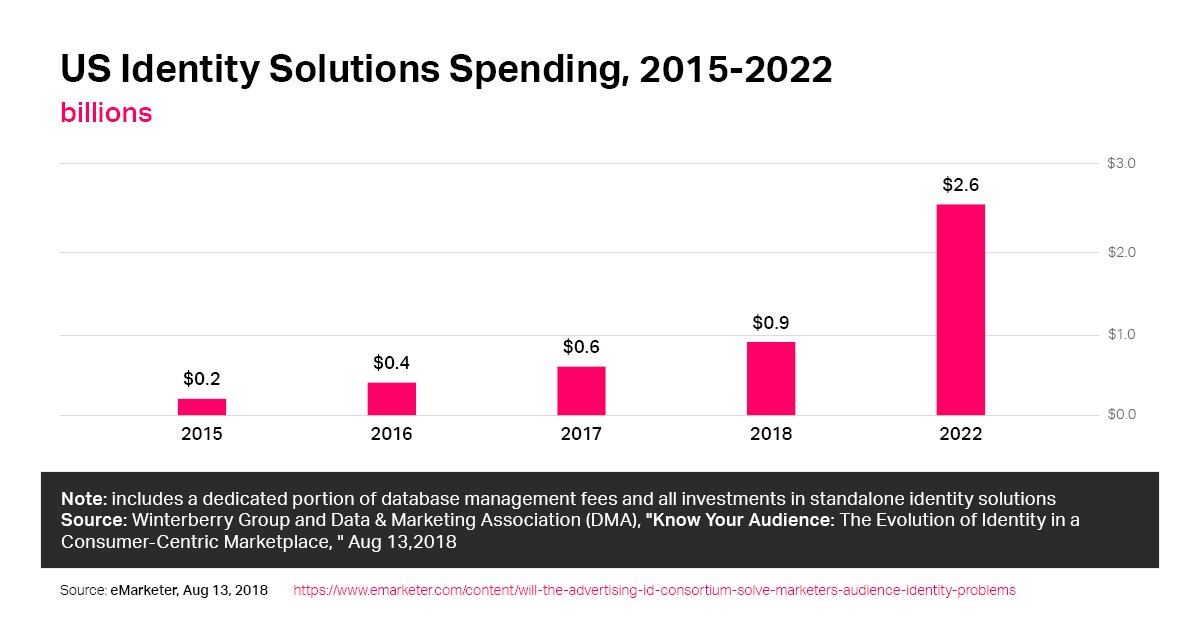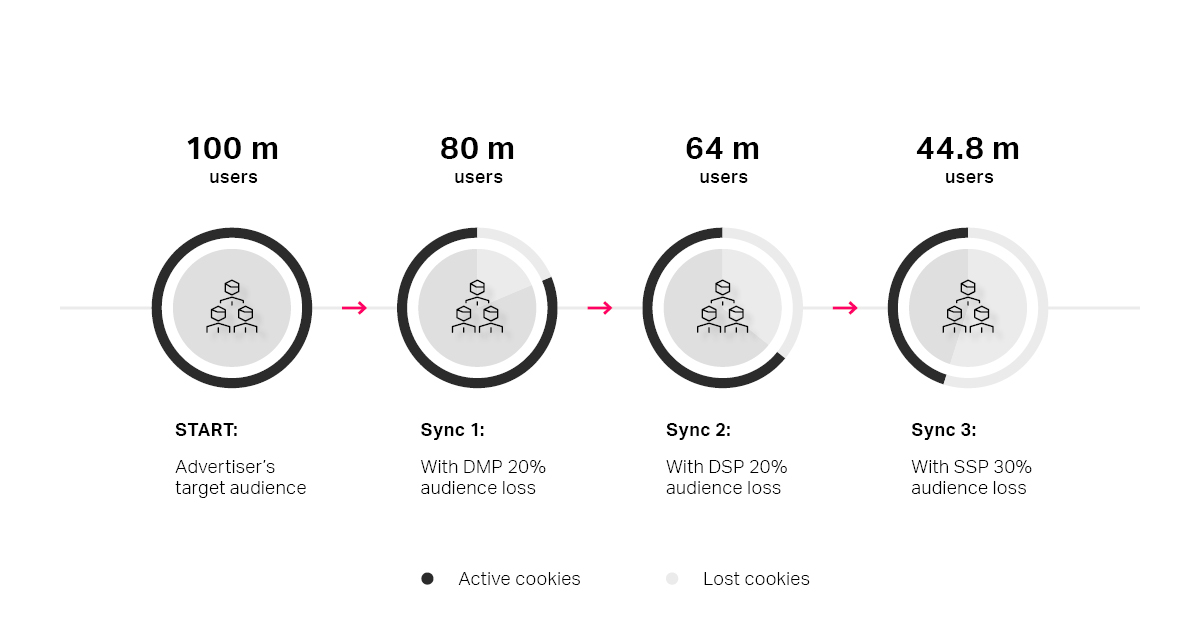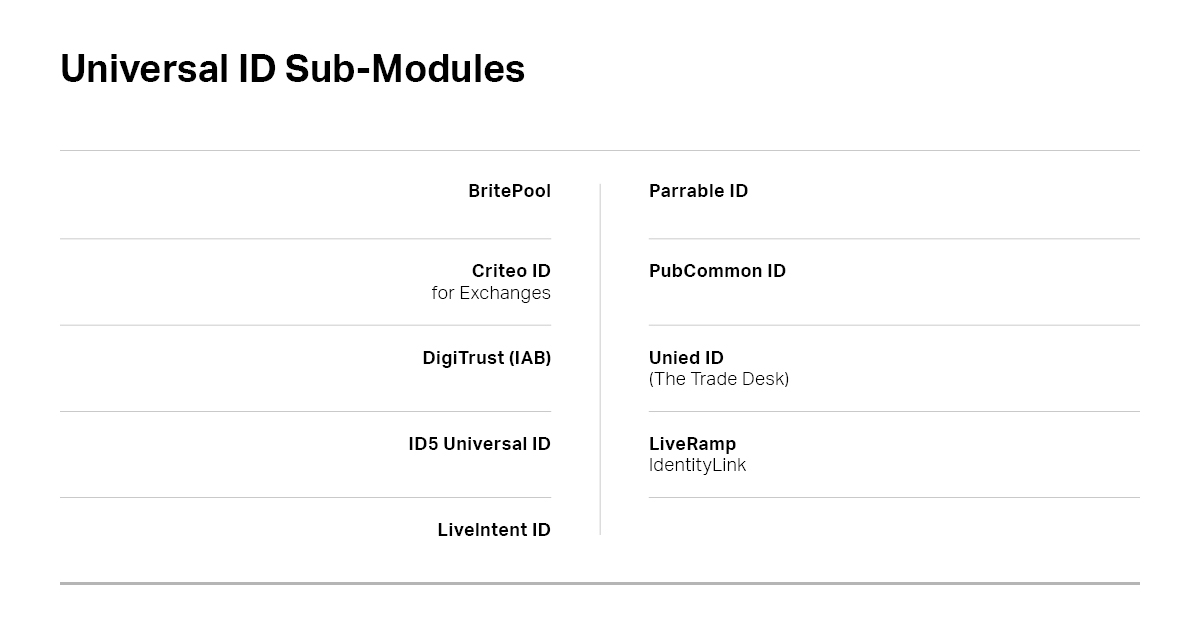Recently we wrote about 3rd-party cookie elimination from Google Chrome. Third-party cookies designed for cross-site tracking and ad serving have played an essential role in digital advertising for over 25 years.
Chrome, which represents about 65% of the global browser usage, announced third-party cookies removal by 2022. Google’s intention means the death of the third-party cookies, keeping in mind that Safari and Firefox have already implemented their tracking mechanisms and shortened 3rd-party cookies’ lifetime.
What Should Adtech Know About User Identifier For Advertising
The ad tech industry is anxious about the current situation as digital marketing’s evolution will make crucial changes. The audience targeting and retargeting will be unworkable. Frequency capping based on third-party cookies will be unavailable. Data management platforms will need to find other ways to create identity linkages. All these and other changes will lead to challenges in the audience identifying and in traffic monetization. As for buyers and publishers, identity matching is necessary for targeting advertising.
Privacy regulations like GDPR and CCPA drive the decision to get rid of third-party cookies. Lack of transparency, data privacy, and measurement and accuracy issues push all the programmatic ecosystem parties to look for different ways of implementing ad campaigns. The legal environment, related to users’ consent and tracking, browser gatekeeping, and ad blocking are three key areas that have become the triggers for eliminating third-party cookies.
Given above, the situation has pushed the publishers, advertisers, and ad tech vendors to figure out a way to trace the audience’s behavior for targeted advertising. They came up with a solution like a user identifier for advertising that relies on first-party data. It can bring a positive experience to create a new advertising ecosystem. And, first-party cookies remain the fundamental assets. They help create people-based advertising. Moreover, according to eMarketer, spending on identity solutions among US marketers will grow from $900 million in 2018 to $2.6 billion in 2022.

What Is The User Identifier For Advertising
User ID for advertising comes in a variety of formats. It’s a key element to consider user-centric data for personalized advertising or frequency capping. Identifiers aim to be an accurate and coherent representation of users. They represent users’ digital touchpoints and generate a permanent pseudonym to target, deliver, and optimize the ads. Identifiers can be selected into three types:
- Anonymous Universally Unique Identifier (UUID);
- Pseudonymous probabilistic identifier;
- Pseudonymous deterministic identifier.
Types Of The User ID For Advertising
The Anonymous UUID is the oldest type of 128-bit number identifier that recognizes information in computer systems. It is based on a timestamp only and not directly related to any personally identifiable information (PII). The probability of UUID duplication is minimal. Many ad tech vendors have been using this type in their third-party cookies tracking.
The pseudonymous probabilistic identifier can take many forms. Probability identification can include data about device network, operating system version, browser version, fonts installed, plugins, ISP, connection type, time zone, screen resolution, and other cross-device tracking, device-fingerprinting, or browser-fingerprinting information. As opposed to cookies, this type of identifier doesn’t depend on browser storage. Browsers can restrict advertising by using this method of identification as it disrupts users’ privacy.
The pseudonymous deterministic identifier uses personal identifiable or related information. It can be login id, email, phone number, or other registration data. Every time the users log back into the site on any device, the platform can identify those individual users and customize their experience. Deterministic IDs rely on first-party data that the publisher or platform receives. This type of identifier, most probably, will substitute the given anonymous UUID in a cookieless environment.
The open web is shifting to the people-based deterministic identifiers as the browsers decided to end with third-party cookies. And, advertisers and marketing agencies are reverting to CRM databases based on first-party data. The tool is a principal asset in the new privacy-conscious digital environment.
What Is Prebid’s User ID Module
Ad tech companies and advertising consortiums have been working on an alternative solution to substitute third-party cookies for targeted advertising in the multi-device and cross-platform ecosystem. Ad tech vendors like The Trade Desk, LiveRamp, etc. On the other side, IAB Tech Lab and Advertising ID Consortium created universal (shared) user ids to target the users and bypass the cookie syncing process.
The cookie syncing process slows down a webpage loading. And it reduces the match rates. Let’s see below.
The Universal ID, created to solve this problem, is a user ID that provides a shared identification to distinguish the user across the supply chain without syncing cookies. First-party data is the basis for universal IDs.
Many ID solutions are being developed. How to work with multiple IDs is a question. For this, Prebid.org, an innovative ad tech organization, created a User ID module as a key element of the Prebid open-source header bidding software suite. The module stores a unique user id in the first-party domain and makes it accessible to all adapters. The User ID module generates, stores, and transmits standardized IDs within the bidstream. The module is open to standardized ID vendors that may provide their sub-modules for publishers. There are 9 universal ID sub-modules currently available within the Prebid User ID module:
How Prebid’s User ID Works And What It Solves
Prebid’s User ID module allows publishers to access a few standardized identity solutions. By using the module, publishers can manage first-party cookies in the header bidding wrapper and determine which IDs are referred to which buyers. There is no need to sync IDs with multiple demand sources. Publishers and DSPs can better identify user data, optimizing the whole process.
Technically it works like this. The publisher decides which User ID modules to add to their Prebid.js package. The User ID module generates the relevant IDs and stores those values within a first-party cookie. Prebid can make these IDs available within the bidstream.
The Prebid’s User ID module is the first collaborative step towards a standardized approach to replace third-party cookies mechanism for targeted advertising. As opposed to the cookies based on probabilistic identification, publisher common ID builds on deterministic matching. It ensures appropriate ads display to the relevant consumers. And it increases the total match rate, bid rate, and CPM for a recognized audience.
How To Implement The User ID Module
The User ID module is a new trend in the digital programmatic landscape. At Adtelligent, we have implemented Prebid’s User ID module. It helps publishers better identify the users and segment them for efficient, targeted advertising. We supported such User ID sub-modules as BritepoolId, Criteo, Digitrust, ID5 Universal ID, IdentityLink, LiveIntentId, NetId, ParrableId, PubCommonId, Unified ID. Our stand-alone solution simplifies the usage of multiple IDs. It boosts publishers’ programmatic monetization by providing advertisers with the required audience to realize only profitable ad campaigns.
To know more about the Adtelligent solution or Prebid User ID module, please, contact us directly.

